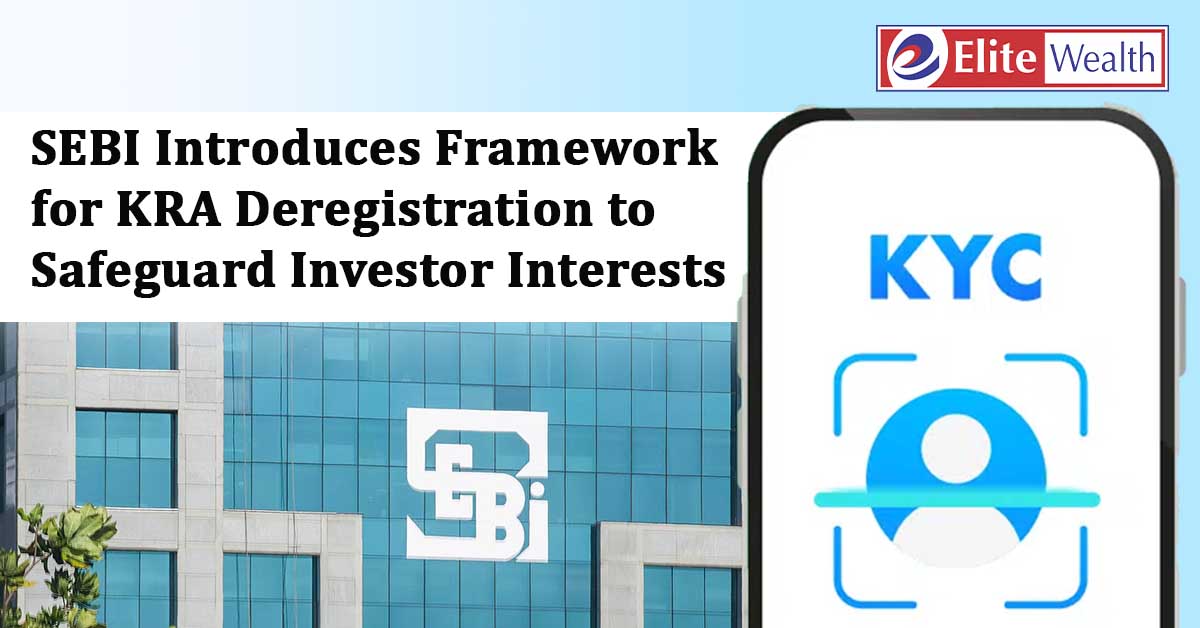
The Securities and Exchange Board of India (SEBI) has issued a new circular on September 5, 2025, outlining a structured framework to govern the surrender of registration by Know Your Client (KYC) Registration Agencies (KRAs). The move is aimed at ensuring an orderly exit process, whether voluntary or involuntary, while protecting investor data and service continuity.
Objectives of the Framework
The regulatory initiative addresses two key scenarios:
- Voluntary exits due to strategic business decisions.
- Involuntary exits caused by financial stress, regulatory action, or operational challenges.
By standardizing the process, SEBI seeks to safeguard investor interests, ensure data portability, and maintain uninterrupted KYC services across intermediaries.
Key Requirements for Deregistration
- Data Portability and Continuity
- KRAs surrendering their registration must ensure seamless transfer of all KYC records—including modifications, updates, and audit trails—to another SEBI-registered KRA.
- Investors will not be required to undergo fresh KYC compliance, ensuring service continuity.
- Standard Operating Procedure (SOP)
- Each KRA must adopt a Board-approved SOP covering:
- Data and documentation transfer procedures
- Settlement of contractual obligations
- Protection of investor data during migration
- Oversight Mechanism
- An oversight committee must be set up to monitor:
- The winding-down process
- Data transfer integrity
- Compliance with investor protection requirements
Timelines for Deregistration
- Notification: Within 7 days of Board approval, the KRA must inform SEBI, and within 14 days notify all stakeholders.
- Data Migration: Records transfer and system deactivation to be completed within 60 days.
- Final Closure: Operational closure and audits to be concluded within 75 days; compliance report to SEBI within 90 days.
- Investor Support Desk: Must be maintained for 12 months post-deregistration approval to assist stakeholders.
Handling Voluntary vs. Involuntary Exits
- Voluntary Exits:
- Public notices to be issued.
- Stakeholders and intermediaries must be informed in advance.
- Adequate transition time provided for system and process adjustments.
- Involuntary Exits:
- In cases of regulatory breaches or financial distress, SEBI may:
- Appoint a temporary administrator.
- Nominate an acquiring KRA.
- Override standard timelines to protect market integrity and investor interests.
- In cases of regulatory breaches or financial distress, SEBI may:
Implications
The framework represents a major step toward regulatory clarity in the KRA ecosystem. By mandating data portability, defined timelines, and oversight mechanisms, SEBI ensures that investor services remain unaffected even during market disruptions. It also strengthens accountability of KRAs while balancing operational realities and investor protection.
Summary
- SEBI has introduced a structured framework for KRA deregistration effective September 5, 2025.
- Key features include:
- Seamless data transfer to another SEBI-registered KRA
- A Board-approved SOP for winding down operations
- An oversight committee to ensure compliance
- Strict timelines (60–90 days) for data migration and closure
- 12-month investor support desk post-deregistration
- The framework applies to both voluntary exits and involuntary exits, with SEBI retaining powers to intervene when investor interests are at risk.
Disclaimer:
This article is intended solely for educational and informational purposes. The securities or companies mentioned are provided as examples and should not be considered as recommendations. Nothing contained herein constitutes personal financial advice or investment recommendations. Readers are advised to conduct their own research and consult a qualified financial advisor before making any investment decisions.
Investments in securities markets are subject to market risks. Please read all related documents carefully before investing.
